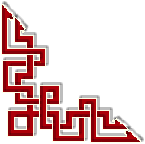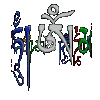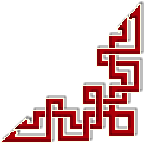 |
|
||||||||||

|
The Tibetan Book of
Living and Dying My bookshelves are filled with books on many topics, including death and dying and spirituality -- this book might be the only book I really need. For years I have thought I must read the
Tibetan Book of the Dead -- but whenever I tried, it was much too
complicated for me to understand. Sogyal Rinpoche has written this book so
that it is easily understood by anyone, even us Westerners, without
compromising any of the Buddhist teachings it offers. In essence, we begin to die the moment we
are born. We spend this life preparing to die well. Nothing is
permanent, but we spend much of our lives filling our time with
activities and pursuits that help us elude ourselves into thinking that
what we see and touch is all that matters. Sogyal Rinpoche says, "To follow the path of
wisdom has never been more urgent or more difficult. Our society is
dedicated almost entirely to the celebration of ego, with all its sad
fantasies about success and power, and it celebrates those very forces
of greed and ignorance that are destroying the planet. It has never been
more difficult to hear the unflattering voice of the truth, and never
more difficult, once having heard it, to follow it: because there is
nothing in the world around us that supports our choice, and the entire
society in which we live seems to negate every idea of sacredness or
eternal meaning. So at the time of our most acute danger, when our very
future is in doubt, we as human beings find ourselves at our most
bewildered, and trapped in a nightmare of our own creation." He writes about the importance of realizing
the interconnectedness of all living beings (including nature), of
meditation (and gives instructions and advice), of finding and being
devoted to a good master (something very difficult for Westerners to
accept -- he acknowledges that there are fraudulent ones about), of
learning to live and learning to die, of letting go of egos and becoming
egolessness. Throughout the book, he tells of female masters as well as
males, something female readers may greatly appreciate. Sogyal Rinpoche is from Tibet, and speaks of
the cruelty of the Chinese to the Tibetan Buddhists (very similar to the
persecution of the early Christians, and later the Jews by the Nazis --
when will we ever learn, but then that's the point of this book!) In the last section of the book, he speaks
of "The Universal Process" which is about spirituality, living and dying
of all humans, regardless of race, spiritual beliefs, gender or national
origin. There are in the back two mantras with explanations and he
shares photographs of his beloved masters. Throughout the book are
inspiring poems from such poets as Rumi and St. Francis of Assisi, as
well as Buddhists. In the very back he gives suggested readings, and
offers phone numbers and addresses of Rigpa National Office, where those
who are interested can find referrals to courses and study groups in the
US, Canada and around the world. This book is a very good place for the
seeker to begin. For those curious about Buddhism, or seriously
interested in becoming a Buddha or a Buddhist, or just looking for more
thoughts and information on death and dying, this book is excellent,
easy to understand, thought-provoking. Read more |
||||||||||

|
The Bardo Guide Book An extraordinary introduction to -- and preparation for -- the art of living and dying. "The Bardo Guidebook" is written in astonishingly elegant, simple prose, and provides a great service: the mere act of reading it diminishes one's personal pain and suffering. The book, written by a Tibetan rinpoche, is a living thing that needs to be read each day. The translation is lyrical and pellucid, yet pulls no punches; it is mountain-stream clear. If I were to live out the rest of my days with just three books, this (and something by Dickens and Faulkner) would be among them. -- BRUCE WAGNER, LOS ANGELES Read more |
||||||||||
 |
Mirror of MindfulnessThis presentation of Tibetan Buddhist teachings on the endless cycle of experience, the four bardos - life, death, after-death, and rebirth - is aimed at inspiring and helping the practitioner achieve liberation from deluded existence and awaken to complete enlightenment for the benefit of others.Read more |
||||||||||

|
Tibetan Book of the DeadAt the outset I must admit that I am only modestly educated in the sphere of Buddhism. That said, I still found the book quite readable & thought provoking. However, I would encourage all readers of this book to pursue at least a basic understanding of the philosophy / religion of Buddhism before taking on this puppy.Although much of what the western reader will find in these pages is antithical to western thought, I still found more than a few parallels. Many passages will bring to mind Plato's allegory of the cave, the "Phaedrus," the philosophy of Hericlitus, the inscription of the Oracle of Delphi and various cantos from Dante's "Inferno." That said, however, I believe the best approach is to attempt to engage the text on its own terms, at least at first. After one has held communion with this eloquent work on its own merit would be the more appropriate time to indulge in what Hegel would call "synthesis" between the two cultural paradigms. Perhaps what is most shocking in this book is just how much the Buddhist idea of the afterlife resembles solipsism. I have difficulty with the idea that everything I experience in the afterlife is a but a hallucination of my own invention. Perhaps I am the only one who finds that bizarre - I don't know. But it is nevertheless....unsettling. It must also be admitted that Buddhism is a rather dark & pessimistic (if not morbid) philosophy / religion. The idea that it is better to escape the womb at birth with the efficacy of reaching Nirvana is.....somewhat alien to me. But, my opinion has little relevance in the scheme of things. This is a great book on ;
your tour-guide thru the Bardo. Is highly recommended to anyone
interested in either Buddhism or world religions.
Read more
| 
Tibetan Book of the Dead
| With this translation of the Tibetan Book of the Dead, or Natural Liberation in the Between, Thurman fulfills the function of a Bodhisattva in helping others attain liberation. This is the most accessible, down-to-earth and learned rendering of this guide to spiritual liberation that I have encountered in modern American English. Thurman even manages to work in a little humor on the edges. What this translation makes abundantly clear is just how many chances in the in-between we have for liberation. Apparently one has to be very non-aware to go through the in-between and miss the chance for stepping off the carousel. of samsara. (So why am I still here?) It would be interesting to devote some time to a cross cultural/cross discipline study of death, dying and beyond. In particular, a study comparing Stan Grof's 3rd perinatal matrix; Sufi descriptions of the interworld (barzakh) and the world of Harqalya (see Corbin's Celestial Body); some schools of visualization/dream work; descriptions of the astral world (Robert Bruce's and Robert Monroe's works in particular); and shamanic traditions would be illuminating. Throw Dante in for good measure. There appear to be large areas of overlap and agreement as to what happens during death, and what happens next. (Get enough blind men together and compare their impressions of the elephant and a clearer picture may come to light.) The best thing about this book, however, is that it invites the reader to learn the Tibetan death ritual for oneself. It helps that, as the book explains, our after-death mind is nine times more intelligent than our current mind. So just a little application now in learning these texts will go a long way later. Face it. At some moment in the near future you will close your eyes for the last time on this world. Death is more certain than retirement - and longer. Like anything else, the more you learn about it and get acquainted with it, the less shocking and scary it will be. Read more
| 
Tibetan Book of the Dead |
This was my first exposure to
the Tibetan book of the Dead. Basically this book is an instructional
guide for traveling thru the Bardo; the period or place in which we find
ourselves after death, and before incarnating into our next life or
form. The book gives a very detailed description of the deities and
phenomena one can expect to encounter in the Bardo, and the actions one
must take to facilitate an optimal incarnation. It also instructs on the
practices that we should engage in while living, to prepare for the
Bardo, and therefore have the best out come of that experience. In
addition, this is a guide for facilitating and guiding another person
thru death and the Bardo. This is a straight forward reading of the book
by Gere, it is clear and easy to understand. He is easy to listen to.
The descriptions of the various deities get a bit long winded as he
describes at least a hundred of them. Some of it is gruesome and down
right scary sounding. But the basic thing to remember is, that it is
all emanating from our own mind, and not to be overcome by fear.
Exposure to this information, practice and meditation on these deities
can help prepare us for this experience. Apparently, if we take the
correct actions (or non actions) in the bardo, we may not have to
continue in samsara but can go directly to the Buddha state, or at least
an incarnation in one of the more pleasant realms. I am fairly new to
Tibetan Buddhism, so my interpretations of what I heard may not be a
perfect reflection of the actual teachings. But that is how I heard it.
Read more
| 
Luminous
Emptiness : A Guide to the Tibetan Book of the Dead |
Having been a practitioner and student of Buddhism myself for over 36 years, I can honestly say that Luminous Emptiness is the most comprehensive and clear presentation of the Tibetan Book of the Dead that I have ever read. Freemantle explains every topic she addresses clearly, simply, lucidly and thoroughly, without the confusing jargon that so often leaves the reader lost and confused in other similar books. One senses behind her written words the presence of a compassionate, knowledgeable and gentle friend who wants to make sure that you understand everything she is presenting. Luminous Emptiness by Francesca Freemantle is a must-read for anyone interested not only in the Tibetan Book of the Dead, but in Tibetan Buddhism in general and Dzogchen as well -- beginner and advanced students alike. Read more | ||||
 |
|
|
©1999 - 2019
Mehndi Skin Art
. All rights reserved.
Terms of Use | Privacy


 >
>